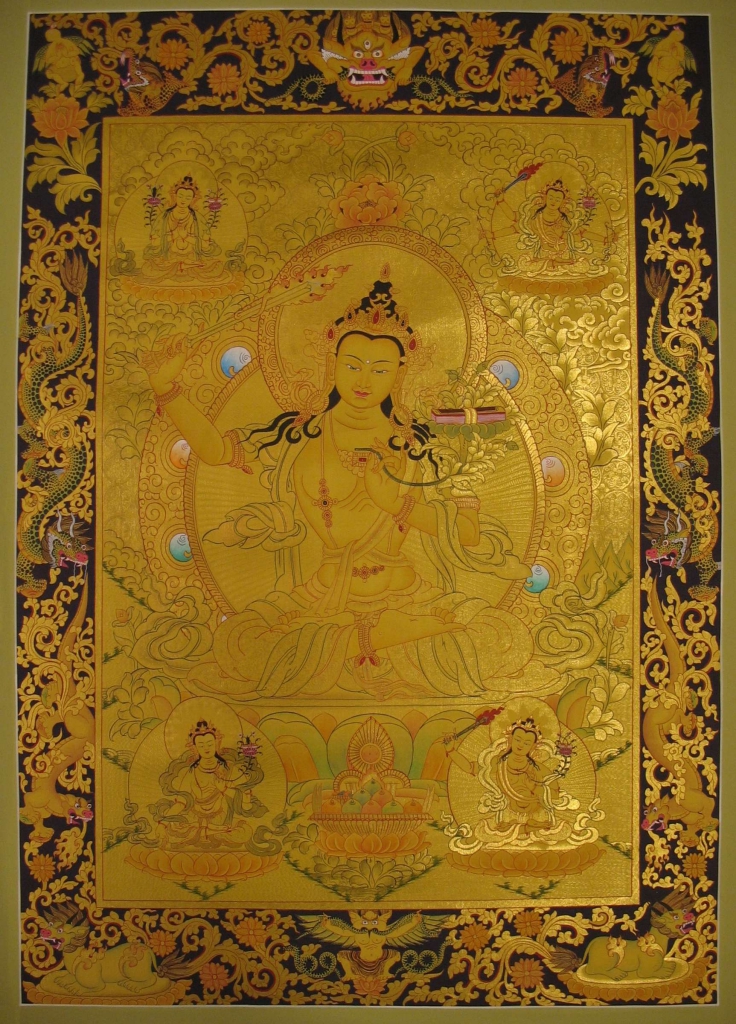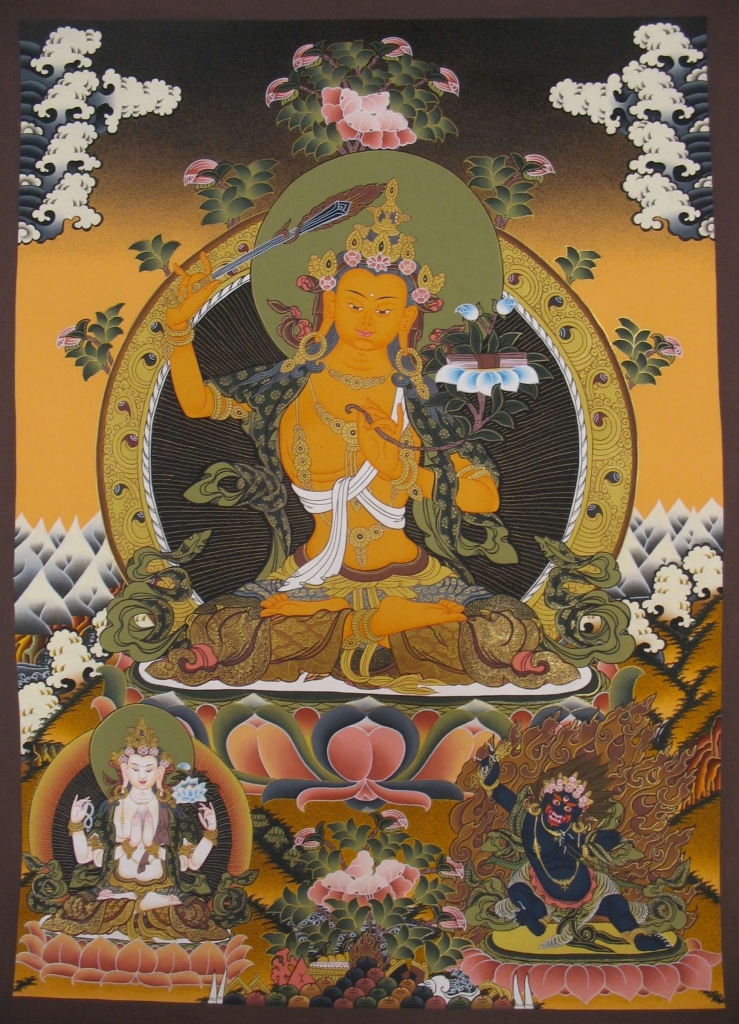The Manjushri Mantra Banner
Manjushri is a Bodhisattva who symbolizes wisdom, and his mantra reflects that attribute. In his right hand, he wields a sword, indicating his ability to cut through deception. In his left hand, by his heart, he holds the stem of a lotus flower, which bears a book – the Perfection of Wisdom teaching, or Prajnaparamita.
Table of Contents
Who is Manjushri?

In Mahayana Buddhism, Manjushri is a bodhisattva associated with Prajna. In Sanskrit, his name means “Gentle Glory”. Manjushri is also known by his full name Manjushrikumarabhuta. Literally, Manjushri means ‘still a youth’. ‘Manjughosa’ is another name of Manjushri.
Manjushree Mantra
The mantra of Manjushri is om a ra pa ca na dhih.
Siddham Mantra of Manjushri

Tibetan Uchen Mantra of Manjushri

Lantsa Mantra of Manjushri

Devanagari Mantra of Manjushri

Transliteration
om a ra pa ca na dhih
What is the meaning of Manjushri Mantra?

om a ra pa ca na dhih.
- OM is considered to be the essence of the five pearls of wisdom, but it can also be reflective of an awareness of the surrounding universe. It is used at the start of many mantras and should be considered to mean “My mind and heart are open to the truths that follow.”
- A leads to the insight that the essence of all things is unproduced.
- RA leads to the insight that all things are pure and free of defilements.
- PA leads to the insight that all dharmas have been “expounded in the ultimate sense.”
- ZA leads to the insight that the arising and ceasing of things cannot be apprehended because in reality there is no arising or ceasing.
- NA leads to the insight that although the names for things change the nature of things behind their names cannot be gained or lost.
- DHI is often defined with the meaning of “prayer” or “understanding” or “reflection.”
What are the benefits of Manjushri Mantra?

Manjushri mantra is often chanted to enhance wisdom and improve one’s skills in debating, memory, writing, and other literary abilities.


















